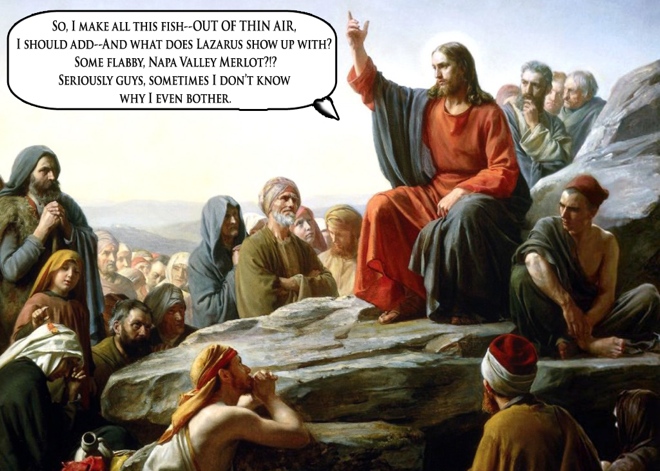Virginia wine: Library wines
If you know where to look (and are willing to pay for it) you can score a rare bottle from a classic Virginia vintage.

Aging wine is an age-old practice, dating back to the Ancient Greeks. Even Jesus expressed an uncharacteristically judgey opinion on the topic, saying in the Gospel of Luke “And no one after drinking old wine, wants the new…The old is better.”
Wow, who knew Jesus was such a wine snob?
While many mass-produced wines contain enough preservatives to maintain an unnatural, Joan Rivers-like stasis, and even the best made whites and rosés will fall off faster than the ’88 Redskins, a few reds (and fewer whites) can actually improve with age. Harsh edges soften, aromas grow in depth and complexity, flavors become more integrated. Some liken it to the way homemade spaghetti sauce always tastes better after it’s been able to sit for a day or two.
Of course, no one’s ever dropped $233K on a 140 year-old bottle of spaghetti sauce.
Most of the Virginia wines you’ll come across—whether in stores, restaurants, or vineyard tasting rooms—are of the current, or a recent, vintage. But if you know where to look, some local vineyards will also offer “library wines” from their reserve cellars. How readily available these older vintages are varies from vineyard to vineyard. When researching what was required to obtain some particularly precious bottles, the responses I received varied from “just come to the vineyard” to “marry the owner’s daughter.”
Some Virginia wineries are more willing to make with the goods. Linden Vineyards in Front Royal offers cellar tastings of their extensive back catalogue every weekend for $20. Their website even includes a database where guests can access two decades worth of detailed tasting notes, production methods, and vintage characteristics.
Twice a year, Virginia’s oldest operating winery, Barboursville Vineyards, opens up their barrel room for public tastings of their most prized vintages. Whenever head winemaker Luca Paschina produces something he’s particularly proud of, it’s bottled in magnum (1.5L) and double magnum (3L) formats, cellar-aged for five to 25 years or so, and made available for sale in the Barboursville tasting room.
Perhaps the polar opposite to the “marry the owner’s daughter” school is Williamsburg Winery. Their online store boasts an impressive list of bottles dating back to the early ‘90s.
Now, in case you haven’t pieced it together yourself, library wines are not cheap. Few things of an extremely limited quantity that take many years to produce are. That’s kind of how capitalism works. These are special occasion wines and a little research will serve you well. I’m going to have to disagree with Jesus on this one (if my grandmother wasn’t already dead, that phrase would have killed her) and clarify that “old” doesn’t always equal “better” in the wine world. If you stumble upon a six-year-old bottle of Pinot Grigio sharing a shelf with Yellow Tail and Mommy’s Time Out, it’s probably not a “library wine” but what folks in the industry call a “close-out”—a wine the distributor is desperate to unload because it’s past its prime or sucked to begin with. Your best bet is to visit a vineyard you like and ask around.
Better yet, purchase a more recent vintage for a fraction of the price and age it yourself. Summon your self-discipline and see how long you can wait as your wine grows in quality and value.
My personal record is “the car ride home,” but maybe you’ll have better luck.
photo by Steffen Hausmann
-
Recommend this
on Facebook -

Report an error
-

Subscribe to our
Weekly Digest





There is 1 reader comment. Read it.